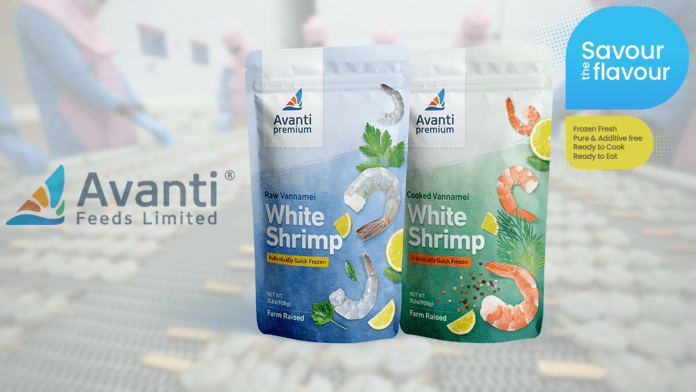Avanti Feeds Ltd Group, a prominent player in shrimp feed production, processing, and exportation, revealed on Sunday that it is actively devising a multifaceted approach to navigate the challenges facing the industry. According to a senior company official, this strategic plan aims to safeguard profit margins, sustain growth, and includes the following components: a focus on value-added export activities, exploring emerging markets, the introduction of ready-to-eat shrimp products, and venturing into the pet food sector through a joint partnership with a Thai firm.
Additionally, the company anticipates government assistance in securing affordable and competitive pricing for raw materials within the domestic market.
“There are headwinds in our industry in both feeds and shrimp processing and exports. We are taking several strategies to overcome it,” said Avanti Feeds joint managing director and CFO C Ramachandra Rao.
“We have also sought government intervention to ensure adequate availability of fishmeal in the domestic market for cost-effective shrimp feed production, as the duty cut is not adequate to provide sufficient relief,” he said.
Regarding the pet feed venture, Rao mentioned that the company has established a technical know-how agreement with Bluefalo Company Limited based in Thailand.
“They will also pick a stake, but finer details of the project, such as project cost, site, and holding pattern, are still being worked out. We will hold at least 51pc as the JV will be a subsidiary,” he said.
Rao stated that the company is exploring fresh markets, such as China and Japan, in addition to its traditional presence in the US and European markets. This strategic move is prompted by the sluggish demand and pricing conditions in the latter regions.
“On average, realisation is about 10-15 per cent less from shrimp exports due to economic woes in the US and European markets,” he pointed out.
“In the second half of the year, we expect a 15-20 per cent decline in export demand. The subdued prices are also discouraging production at the farm level, so cost-effective raw materials are key to the stability of the industry,” he said.
He mentioned that although the first quarter yielded positive results for feed production, there might be a decline in feed output for the entire year due to the prevailing challenges.
“We had suggested the government to impose export duty and quota on fishmeal. No respite has been received so far,” Rao said.
Over the past 8 to 10 months, there has been a significant surge in fishmeal exports from India to nations like China, Taiwan, and Vietnam. This increase has resulted in a shortage of fishmeal available for domestic consumption.
India’s annual fishmeal production hovers around 3.75-4 lakh metric tons, with the shrimp feed industry consuming approximately 3 lakh metric tons each year. This indicates that the domestic market relies on 75-80% of the fishmeal production for feed manufacturing purposes.
In the current fiscal’s June quarter, the company reported a net profit of INR 115 crore, generated from a revenue of approximately INR 1,553 crore.





